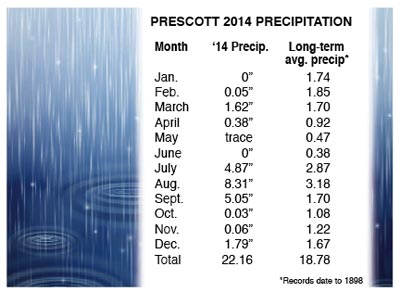

This cycle continues until land areas cool in early fall and ocean water temperatures reach their peak. As rain begins to fall, humidity levels increase over land, triggering more thunderstorms. When combined with the low level moisture, a favorable environment for thunderstorm development is created over areas that are typically dry for much of the year. These easterly winds aloft import considerable moisture off nearby oceans. As the upper high migrates north, upper level temperatures south of the high cool slightly, while winds aloft over a monsoon region turn around to the east (Graphic 4). The jet stream, which blows from west-to-east around the globe, is forced toward the poles as the upper level high expands (Graphic 3). The sinking air aloft forms high pressure at jet stream level and causes upper level winds to weaken.

As surface low pressure forms over the hot land areas, the air in the upper levels of the atmosphere also sinks and warms. Monsoon patterns also share a similar upper level flow characteristic. Graphic 2: Mean sea level pressure and near surface flow over India, July (monsoon season) Graphic 1: Mean seal level pressure and near surface flow over India, January (dry season) This reduces the pressure difference, which in turn causes the moist onshore flow to diminish, and the monsoon gradually ends. This cycle will continue until land areas begin to cool in the early fall and water temperatures reach their peak in early fall. Once this occurs and rain begins to fall, humidity levels increase over land, which only triggers more thunderstorms. This moist air moving onto the hot land eventually becomes unstable and develops into thunderstorms. Eventually, the pressure difference increases to the point that the cooler and much more humid air over the ocean is drawn toward the hot, dry air over land (Graphic 2). Thus air pressures remain high relative to the land. Adjacent large bodies of water are also warmed, but not as quickly. The intense heat causes surface air pressure to fall, forming an area of low pressure known as a thermal low. However by late spring, strong solar heating causes temperatures to soar over these land areas. For much of the year, low level winds in dry subtropical regions tend to blow from the land toward the sea (Graphic 1). These wind shifts, and the dramatic change in weather they bring, are all more or less driven by a similar mechanism. We now know that these large scale wind shifts, from dry desert areas to moist tropical areas, occur in other parts of the Earth, including the Oceanic subcontinent, Southeast Asia, Australia, North America, Africa and South America. Traders plying the waters off the Arabian and Indian coasts noted for centuries that dry northeast winds in the winter suddenly turn to the southwest during the summer, and bring beneficial yet torrential rains to the Asian subcontinent.

The word monsoon is derived from the Arabic word mausim, which means season.


 0 kommentar(er)
0 kommentar(er)
